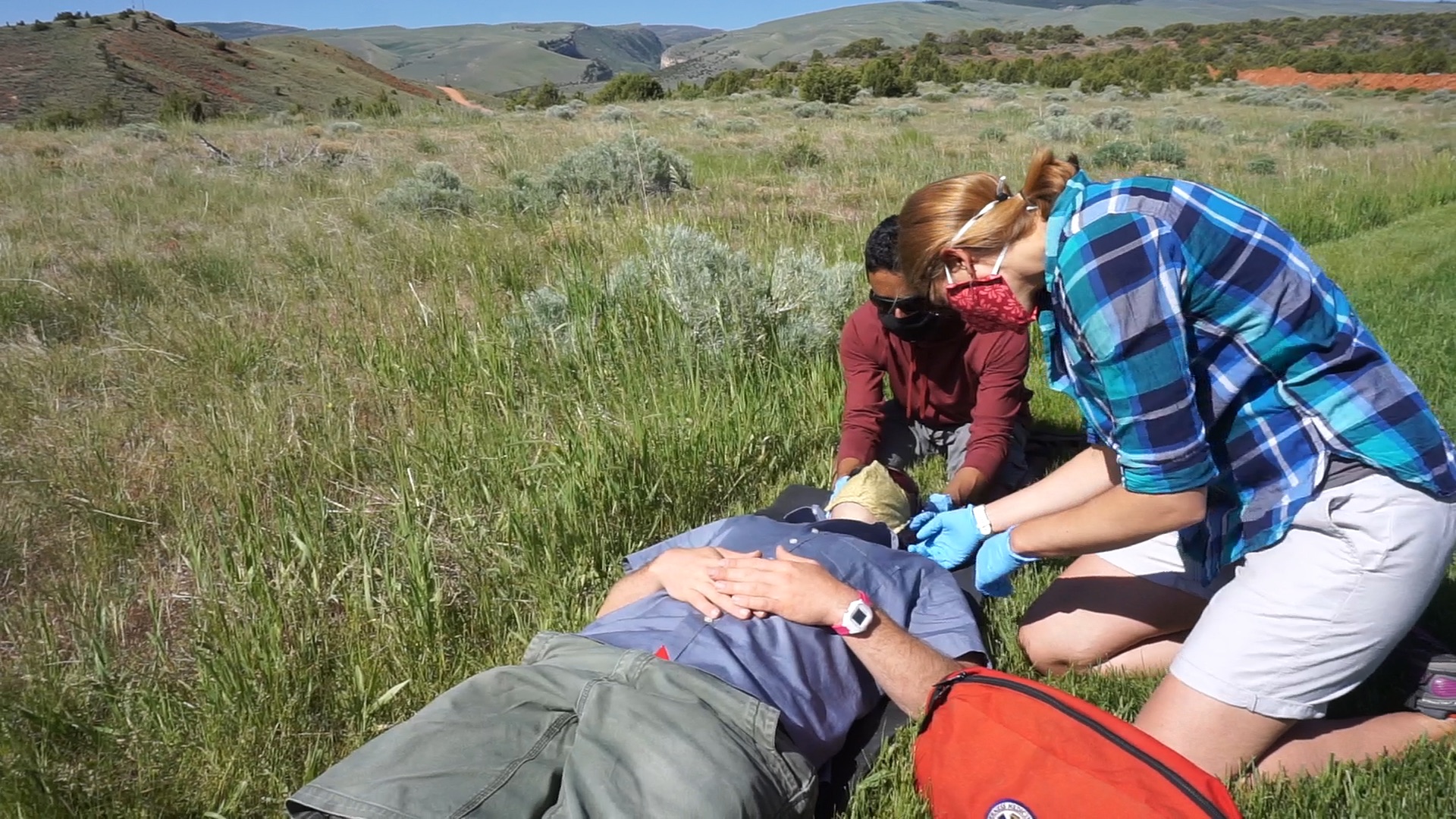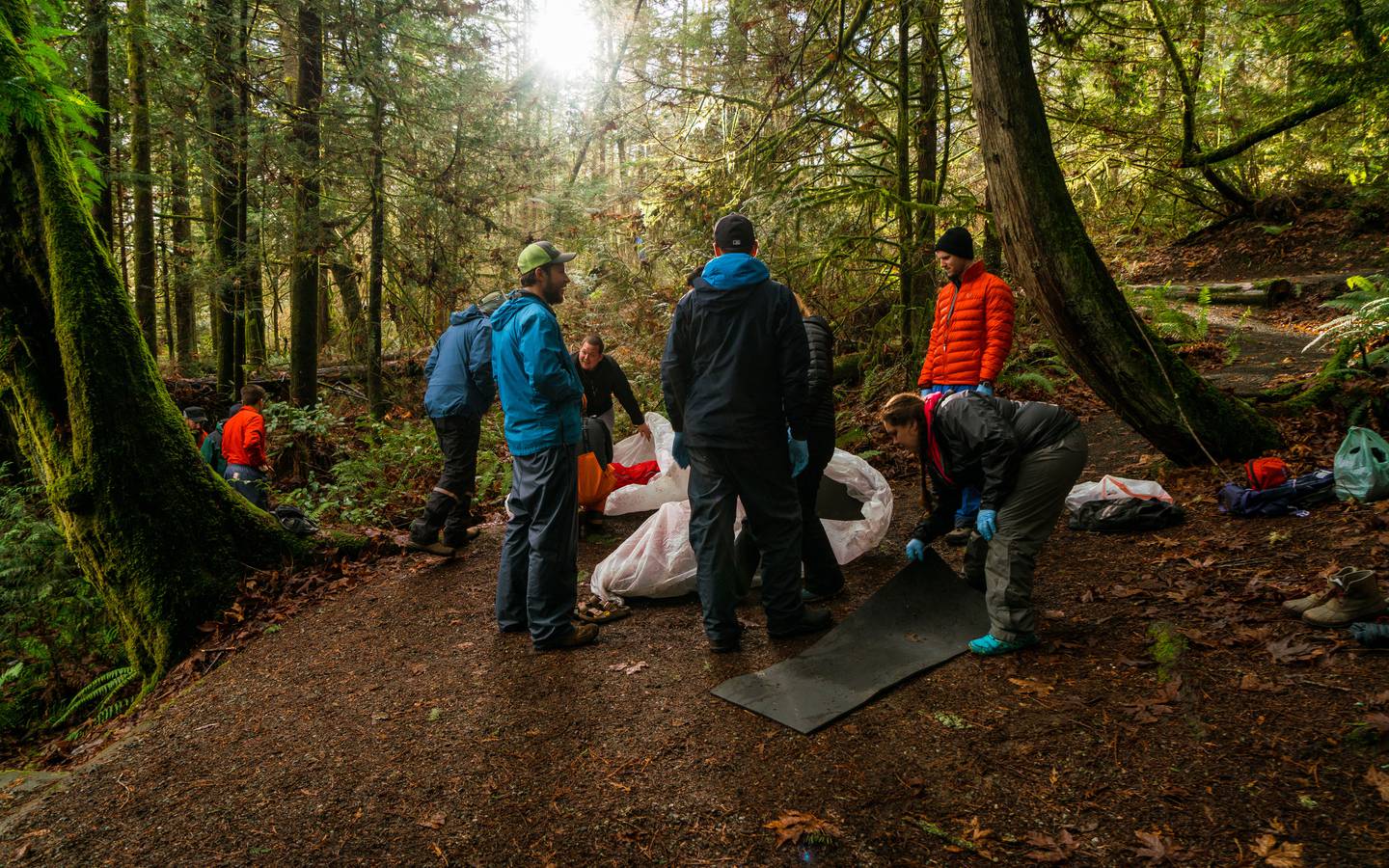
On July 1, NOLS Wilderness Medicine will start running courses for the first time since suspending courses in March due to the global pandemic. The decision is the end result of more than four months of work by a task force dedicated to answering the questions: can we run courses responsibly and effectively, and will doing so during this pandemic serve our mission and students?
NOLS decided the answer to both was yes. “In this day and age, our curriculum is more valuable than ever,” said Melissa Gray, director of NOLS Wilderness Medicine. “We teach people to care for each other. We want to get back to training our students, and our students want to get back to learning those skills.”
Practical Steps for Mitigating Risk
One of the early considerations was how to adapt curriculum to reduce risk to students and instructors. “Our curriculum is based around hands-on skills and scenarios—splinting, patient movement, bleeding control, basic life support—and we can’t effectively train competent first responders without them,” said Curriculum Director Tod Schimelpfenig. “Close physical contact is an inherent part of our courses, so we put a lot of thought into how to minimize the risk of disease transmission.
“I wrote a new introductory curriculum piece on infection control, and that will be the first thing taught on every course. In addition, now when you're doing scenarios, you're going to be masked, gloved, and wearing glasses. Responders do that in the real world, of course, but this is new for us in the classroom setting.”
The course volume will be limited. “Ordinarily, over 130 Wilderness Medicine courses would be run around the world in July and August,” said Gray. “Now, we’re looking at about 50, almost all in the US.”
Course venues required consideration as well. According to Schimelpfenig, “We set a group of parameters: can you travel to the course area? Are gatherings the size of our courses permitted? Also, what is the classroom setting like? Is there adequate space to physically separate, and adequate ventilation? As sponsors asked us about running their courses this summer, we worked with each to assess these factors and determine which courses were supportable.”
Schimelpfenig leaned heavily on scientific resources, as well as guidance from the CDC and other agencies. He also found expertise in the NOLS community. “Our medical advisors and Board have been tremendously helpful,” he said. “So has our faculty. We have a bi-weekly Zoom call with faculty, and they punch holes in our plans, come up with observations. In addition, I talk regularly with the people who run the other big wilderness medicine schools. This goes beyond NOLS—we want to share best practices across the industry.”
The added curriculum and increased emphasis on hygiene will take time during the course, a major consideration especially for the already packed 2-day Wilderness First Aid (WFA) course. To ensure the WFA curriculum still fits in the two-day block, certain topics have moved online for students to review at home. Longer courses, such as Wilderness First Responder and Wilderness EMT, have more flexibility to absorb the extra tasks.
These changes are having interesting ripple effects that require attention. For instance, the new personal protective equipment (PPE) protocols will massively increase students’ use of gloves. “We might use as many as 2 million additional gloves this year,” said NOLS staffer Travis Welch, who is helping to coordinate the evolving needs of courses. “We care about how much waste our courses create, both from an environmental ethic standpoint, and also because we’re training our students to operate in resource-limited environments, and they need to be learning in a realistic manner.”
The school is trying to reduce the impact. For instance, glove recycling is already in place at the NOLS Wyss Wilderness Medicine Campus, and NOLS is examining how to expand the program to other areas.
NOLS Wilderness Medicine courses train students to operate confidently in times of stress with incomplete information, and the pandemic is adding new dimensions to that education. “We think about risk and uncertainty a lot in our curriculum,” said Schimelpfenig. “What's the risk of going down that snow covered slope to help that patient, and am I comfortable with that risk? Managing the risks within a pandemic is an entirely new thing, but if we can approach it thoughtfully and learn to make good decisions, we can continue to help those in need.”
Written By
Ben Lester
As the Assistant Director of NOLS Custom Education, Ben leads a team that specializes in blending NOLS' curriculum and unique approach to leadership education with the goals and culture of our clients. Ben became an instructor in 2009, joining the school as a sailor after a first career as a science journalist. In the intervening years he's expanded into hiking, rock climbing, and mountaineering courses. In addition to his work in Custom Education, over the years he's also managed curriculum publications for NOLS, edited A Worthy Expedition: the History of NOLS, and managed vehicles and maintenance at NOLS PNW. He lives in Lander with his wife and daughter. Even in land-locked Wyoming, they still manage to get out sailing occasionally on the mountain lakes in their homebuilt 20-foot sailboat.


%20(1)-ben-lester-profile.jpg)
